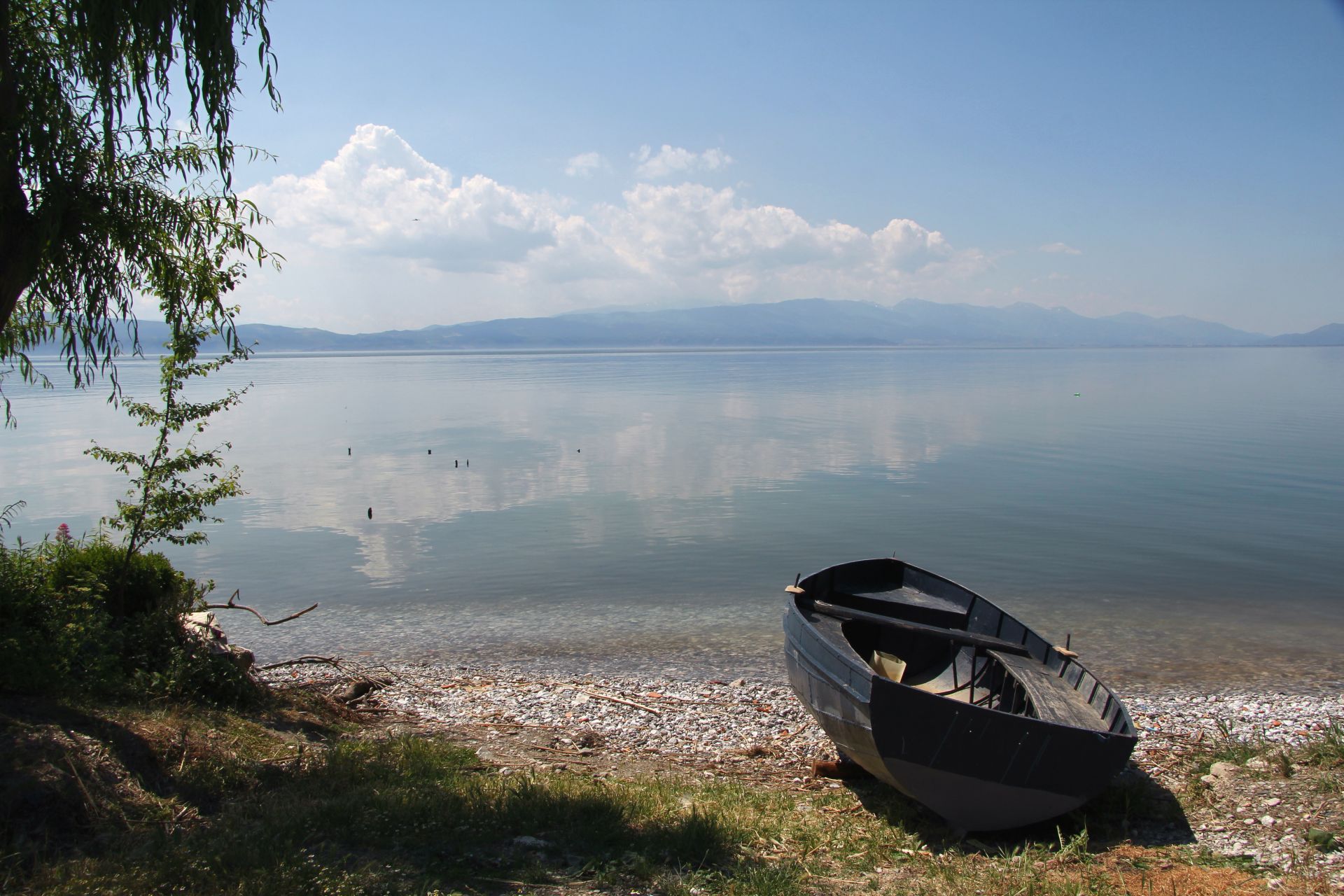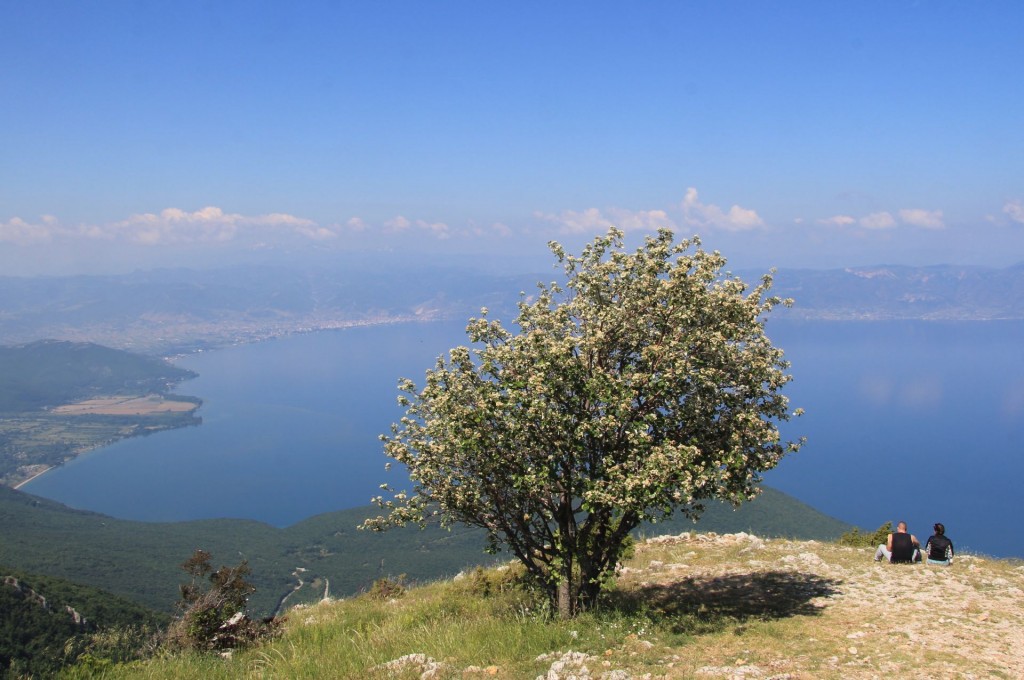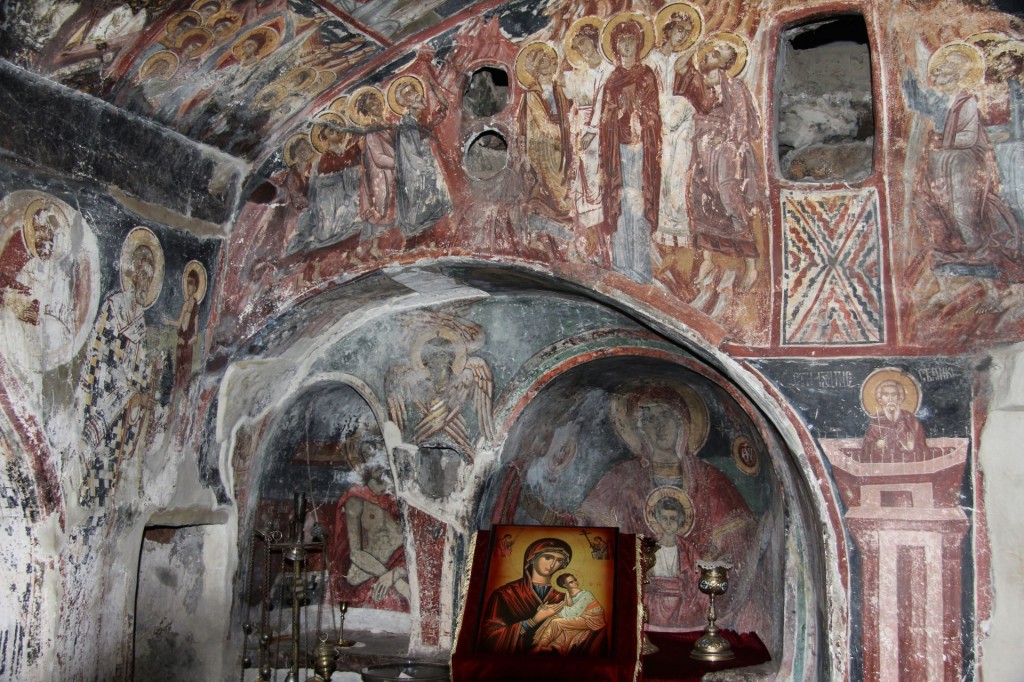 Two weeks ago we visited Lake Ohrid in Macedonia. Of course, the town of Ohrid itself is the most popular tourist resort on the lake and all tourists coming from Western Europe (and in particular from the Netherlands) are interested in seeing the beautiful monasteries of St. John Kaneo, Plaošnik, the church of St. Sofia and Samuel’s fortress. But Lake Ohrid, the deepest lake in the Balkans and also Europe’s oldest lake, also offers other tourist attractions.
Two weeks ago we visited Lake Ohrid in Macedonia. Of course, the town of Ohrid itself is the most popular tourist resort on the lake and all tourists coming from Western Europe (and in particular from the Netherlands) are interested in seeing the beautiful monasteries of St. John Kaneo, Plaošnik, the church of St. Sofia and Samuel’s fortress. But Lake Ohrid, the deepest lake in the Balkans and also Europe’s oldest lake, also offers other tourist attractions.
When we arrived, the town was overcrowded. We soon left and found accommodation at a small camping site named “Rino” in Kališta, 30 km southwest of Ohrid. There we had a wonderful evening on the bank of the Lake: our dinner consisted of a real Macedonian specialty, a huge grilled Ohrid trout with a glass of Alexandria wine and fresh salad. The fish was excellent, it tasted like a trout crossed with a salmon! By the way, did you know that the Ohrid trout is depicted on the reverse of the Macedonian 2 denars coin?
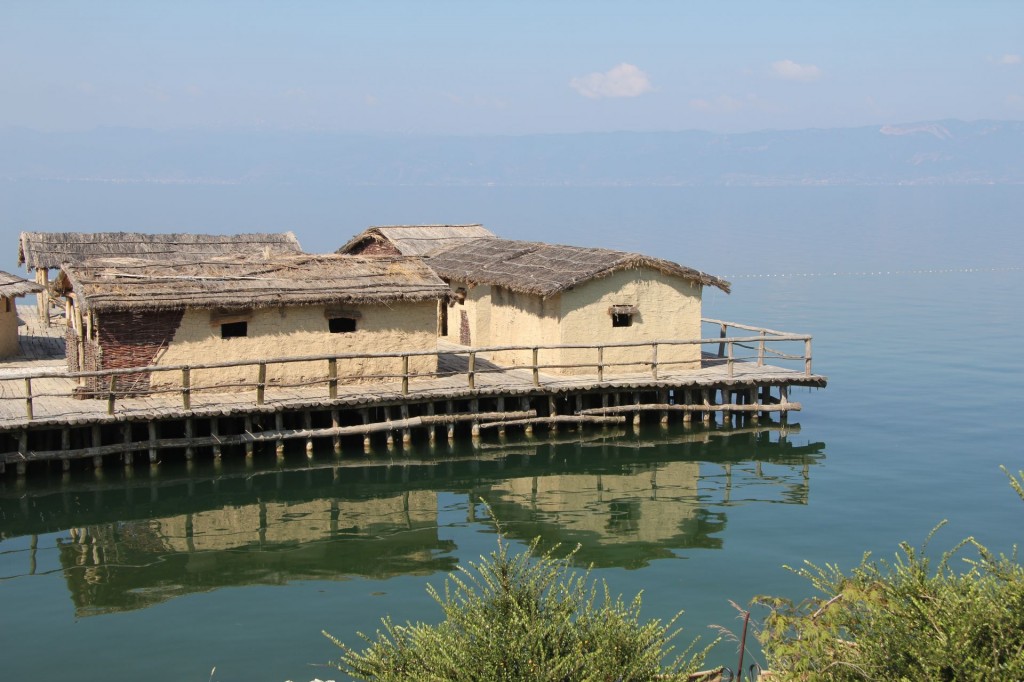 A short walk from the camping ground in Kališta was sufficient to find the monastery complex “Holy Mother of God”, located on the shore in a beautiful rocky area. The central place in the Kališta monastery complex is taken by the new church of “Holy Mother of God”. Another smaller church is dedicated to St. Peter and Paul. But the oldest part is a cave church, built in a rock in the 13th century and covered with beautiful frescoes.
A short walk from the camping ground in Kališta was sufficient to find the monastery complex “Holy Mother of God”, located on the shore in a beautiful rocky area. The central place in the Kališta monastery complex is taken by the new church of “Holy Mother of God”. Another smaller church is dedicated to St. Peter and Paul. But the oldest part is a cave church, built in a rock in the 13th century and covered with beautiful frescoes.
But there are many other interesting places on the Lake. We continued our trip passing through Struga, Ohrid and Peštani, a nice and calm resort with many hotels, restaurants and apartment buildings, on our way to National Park Galičica and further to Albania.
A very special place is the Bay of Bones, a museum on water. It is situated on the southern coast of Gradište Peninsula, south of Peštani.
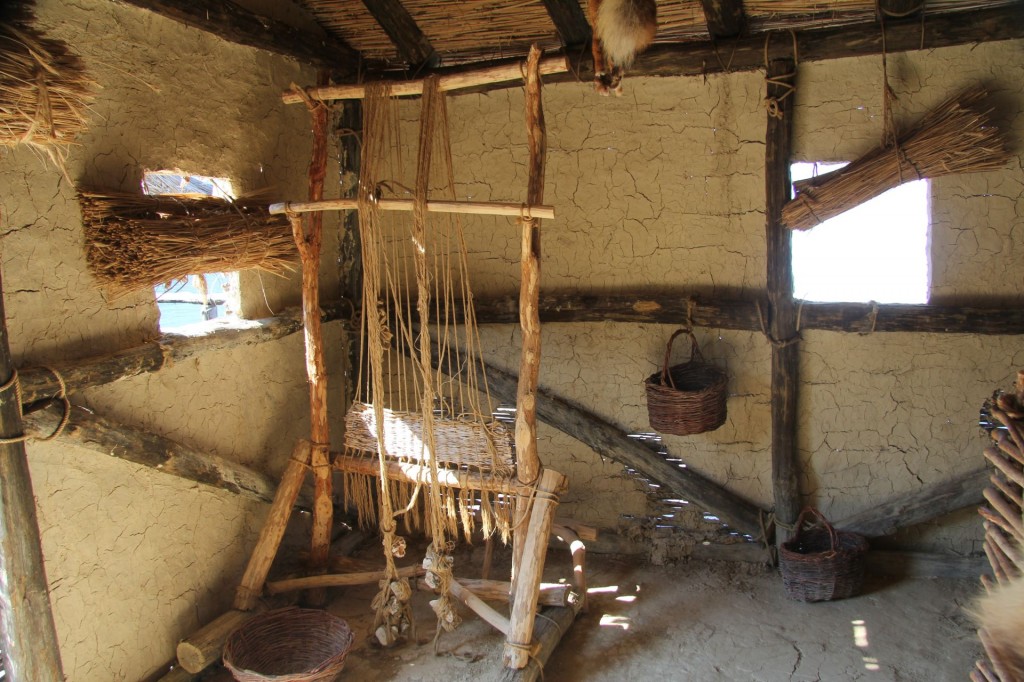 The Bay of Bones is an authentic reconstruction of a part of a pile-dwelling settlement, dating back between 1200 and 700 BC. In ancient times, this settlement had 60 houses and was connected to the shore by the use of a movable bridge. At this site, underwater archaeological explorations brought out stone tools, ceramics and bones of animals and deer horns. Apart from the wooden houses, there is also a small museum with salvaged artifacts.
The Bay of Bones is an authentic reconstruction of a part of a pile-dwelling settlement, dating back between 1200 and 700 BC. In ancient times, this settlement had 60 houses and was connected to the shore by the use of a movable bridge. At this site, underwater archaeological explorations brought out stone tools, ceramics and bones of animals and deer horns. Apart from the wooden houses, there is also a small museum with salvaged artifacts.
A Roman military fortification (Gradište) has been reconstructed on the hill above the Bay of Bones simultaneously with constructing the pile-dwelling settlement and the Water Museum (2008).
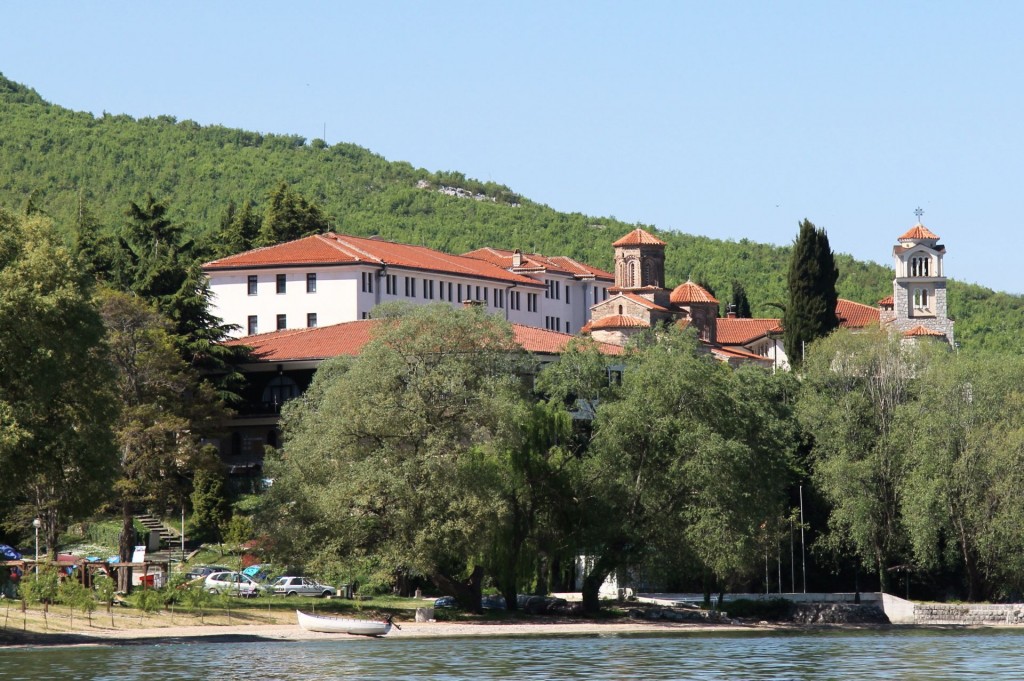 After having visited this extraordinary tourist attraction, we continued our trip to the famous St. Naum monastery. This Orthodox monastery is situated at a distance of 29 km from Ohrid, but many tourists visit this place by boat. We enjoyed the gardens with peacocks all over it. What a pity that the area was, again, very crowded with tourists, so that we could hardly find a place to admire the beautiful icons and frescoes in the church.
After having visited this extraordinary tourist attraction, we continued our trip to the famous St. Naum monastery. This Orthodox monastery is situated at a distance of 29 km from Ohrid, but many tourists visit this place by boat. We enjoyed the gardens with peacocks all over it. What a pity that the area was, again, very crowded with tourists, so that we could hardly find a place to admire the beautiful icons and frescoes in the church.
The complex contains a hotel, restaurants, shops and many souvenir stalls, which is all maybe attractive for tourists, but spoils the atmosphere of this monastery that was built by St. Naum of Ohrid in the year 905. However, the springs and the splendid position on the bank of the Lake compensate the commercial environment.
The road to Albania took us further through Galičica National Park. The vistas from Mount Galičica on the Lake were stunning, as from this point the Lake seems to have a particular deep-blue color. Many tourists were using the opportunity to escape the heat and make a hiking tour through the mountains, whose peaks reach over 2,000 meters. This is a beautiful area for nature lovers. But of course, when you have a car, it is also interesting to continue to the nearby Lake Prespa with its calm villages and Dalmatian pelicans!
